In my previous blogs I discussed the early experimental, prototype and operational V/STOL combat jet aircraft that were developed in the late 1950’s through to the late 1970’s. By the 1980’s significant improvements had been made in performance, handling and the weapons load capability of new V/STOL combat jets. The following is a brief history on these second generation V/STOL combat jet aircraft from the 1980’s, including operational and experimental aircraft that made significant advancements in V/STOL flying.
HARRIER II
Significant improvements were made in second generation V/STOL combat jet aircraft that resulted in improved avionics (including the option of multi-mode pulse doppler radar), digital cockpit displays and controls, improved flight control systems, increased performance and increased weapons capability. Only two second generation aircraft became operational and both are variants of the Harrier II: the McDonnell Douglas AV-8B Harrier II and British Aerospace Harrier II, powered by a development of the Rolls Royce Pegasus 11-21 Mk.105/Mk.106 engine and later the Pegasus 11-61 Mk.107. The Harrier II is an advancement on the original Hawker Siddeley Harrier design and the type has been operated by the United States Marine Corps, Spanish Navy, Italian Navy, Royal Air Force and Royal Navy.

YAV-8B Prototype
Interestingly the United States lead the development of the Harrier II. In the 1970’s both the United States and United Kingdom were working together to develop an advancement of the original British Harrier design (to improve the limitations of the original Harrier) but in 1975 due to budgetary constraints the UK withdrew from the program (they rejoined the program through British Aerospace in 1981 and conducted a work-share program that eventually also lead to the British Aerospace Harrier II). The United States went on to heavily redesign the AV-8A Harrier aircraft.
In 1978 2 YAV-8B Harrier prototypes were converted from existing AV-8A airframes (S/N 158394 and 158395) which naturally looked nothing like the production version. The YAV-8B varied from the AV-8A as it featured a composite wing that was to be used in the AV-8B production aircraft along with enlarged air intakes, cold exhaust nozzles and lift improvement devices were added under the fuselage (they retained the original cockpit displays and controls of the AV-8A). The YAV-8B prototypes were used for flight testing and ski-jump take-off tests. Positive results in payload and V/STOL performance resulted in the order for the Harrier II to go into development in 1979 (right up until 1980 the US Navy tried to stop the program due to budget constraints but the USMC won over with the Department of Defence. Good decision!). The second prototype crashed on a test flight in 1979 due to an engine flameout (the pilot ejected safely) and the first ended up being used by NASA for V/STOL flight tests.

NASA
The purpose of the NASA YAV-8B testing was to aid in the development of future V/STOL technology such as flight controls and cockpit displays. The remaining YAV-8B prototype was modified into the V/STOL Systems Research Aircraft (VSRA) and was fitted with Digital fly-by-wire controls and a programmable electronic HUD to reduce pilot workload and improve operational precision. These tests lead to improvements in the AV-8B Harrier II and aided the development of the Joint Strike Fighter program. The YAV-8B was operated by NASA at the Ames Research Centre in California from April 1984 to November 1995 (they also operated an earlier AV-8C variant from January 1986 to February 1995).
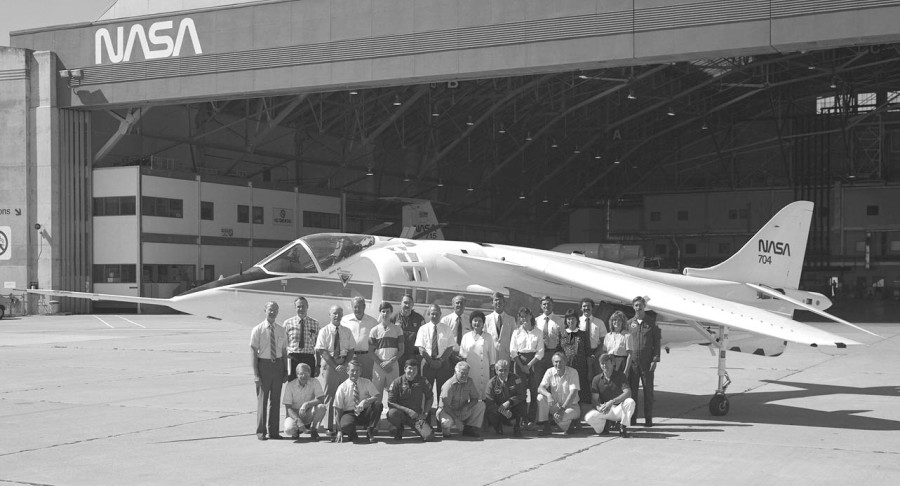

AV-8B
The McDonnell Douglas AV-8B Harrier II made its maiden flight in November 1981 and was introduced into USMC service in January 1985. 337 were built (including the TAV-8B two-seat trainer and aircraft fro the Italian and Spanish Navies) and it has a maximum speed of 1,083 km/h / 673 mph (22,000 pounds of engine thrust gives it some zip!). Weapons include a 25mm rotary cannon (two pods are located under the fuselage – one for the cannon and the other for ammunition), missiles (air to ground and air to air), guided/unguided bombs and rockets. The AV-8B remains in service with the USMC, Italian Navy and Spanish Navy.
United States Marine Corps
The USMC operate the AV-8B from land bases, Landing Helicopter Deck (LHD) ships and aircraft carriers of the US Navy. The initial USMC variant of the AV-8B was a day attack aircraft fitted with a nose mounted Hughes AN/ASB-19 angle-rate bombing system which featured a highly accurate targeting system of a combined TV imager and laser tracker. The AV-8B also included defensive systems such as chaff dispensers, a radar warning receiver and electronic counter measures. It was soon realised that the flight characteristics and digital cockpit of the AV-8B meant that the older TAV-8A two-seat trainers were inadequate for pilot conversion to the Harrier II. This lead to the development and production of an eventual 28 TAV-8B two-seat trainers for the USMC with the first delivered in 1987.
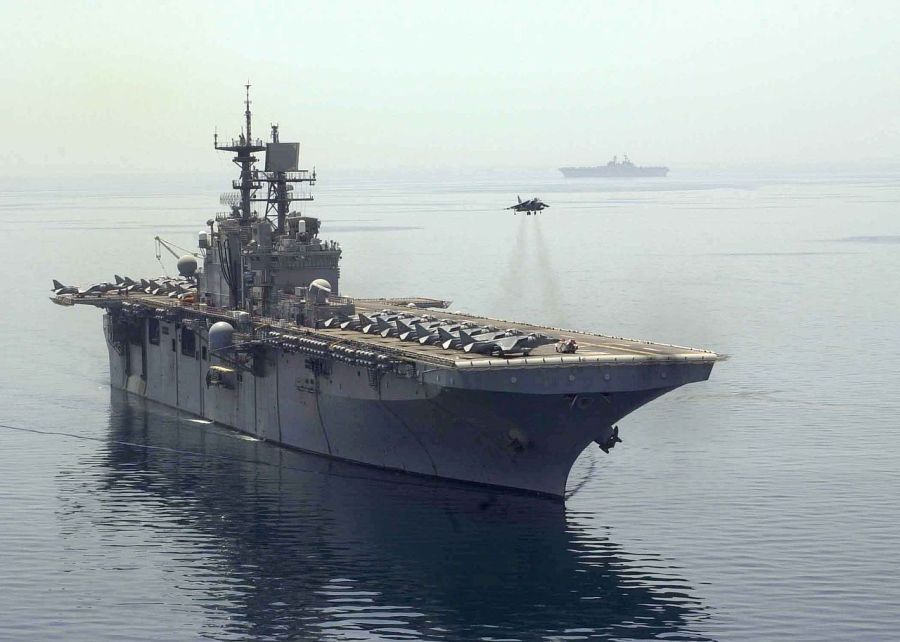
In 1991 USMC AV-8B’s began to be upgraded to the night attack variant or AV-8B(NA). A Forward Looking Infra Red (FLIR) camera was added above the nose along with a new HUD to enable night vision targeting (the pilot can also wear night vision goggles). In addition a Honeywell digital moving map system and the improved Pegasus 11-61 Mk.107 engine were installed. 17 TAV-8Bs were upgraded with the night-attack capability in the early 2000’s to aid night training.



Between 1993 to 1997 46 new build AV-8B Plus Harrier II were introduced along with upgraded airframes, Most of the original AV-8B’s were either upgraded to the AV-8B(NA) or AV-8B Plus standard with the remainder being retired. The AV-8B Plus is fitted with an APG-65 multi-mode radar (taken from early model F/A-18 Hornet fighters) and an AN/AAQ-28V targeting pod. This variant can carry advanced air to air missiles such as the AIM-120 AAMRAM (medium range missile).





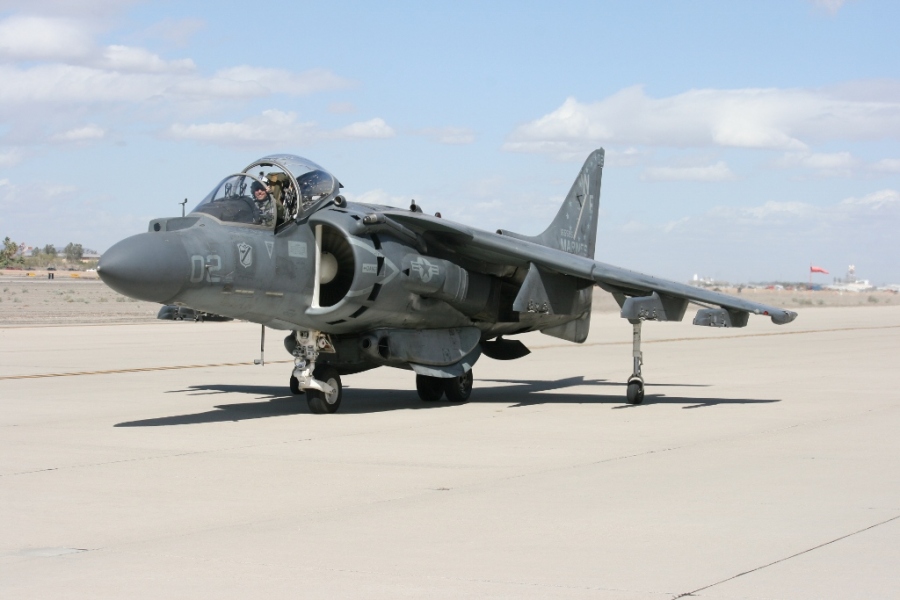






Spanish Navy
The Harrier II is known as the VA-2 Matador II in Spanish service or EAV-8B to McDonnell Douglas. Originally 12 Matador II aircraft were delivered between 1987 and 1988. Between 2000 and 2003 5 of the original aircraft were upgraded to the EAV-8B Plus variant with the addition of an APG-65 multi-mode radar to join 8 new build EAV-8B Plus along with a with a twin-seat TAV-8B trainer that were delivered from 1996. Today 12 EAV-8B Plus and the trainer remain in service. They used to operate from the aircraft carrier Príncipe de Asturias (R11 commissioned in 1988) but it was decommissioned in 2013 due to budget cuts, so today they only operate from the Spanish Navy amphibious assault ship Juan Carlos I (L61 commissioned in 2010) which is fitted with a ski-jump for aircraft STOVL take-off.




Italian Navy
In 1991 the Italian Navy received the first of 16 AV-8B Plus and 2 TAV-8B twin-seat trainers. All but 2 AV-8B Plus remain in service today and operate from the aircraft carriers Giuseppe Garibaldi (C 551 a through deck carrier commissioned in 1985) and Cavour (C 550 a STOVL aircraft carrier commissioned in 2008). The Italian aircraft are capable of carrying both short range AIM-9 Sidewinder and medium range AIM-120 AMRAAM air to air missiles for Combat Air Patrol duties. They conducted such missions over Libya in 2011 during NATO’s Operation Unified Protector and are also capable of carrying Rafael Litening targeting pods for Intelligence, Surveillance and Reconnaissance (ISR) sorties.
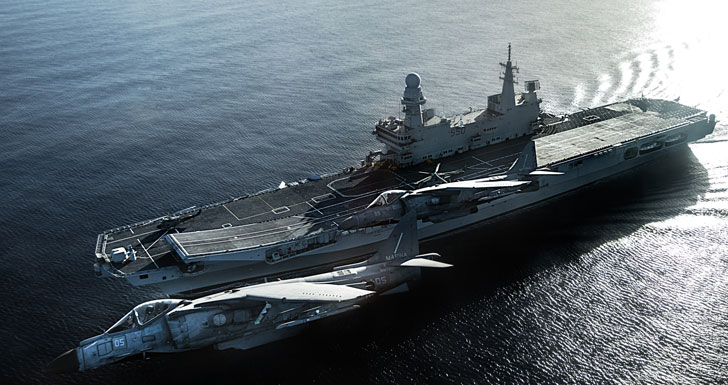


British Aerospace Harrier II
Royal Air Force & Royal Navy
The British Aerospace Harrier II was introduced in 1989. 143 were built and it had a maximum speed of 1,065 km/h / 662 mph. There were 3 variants of the British Aerospace Harrier II, the GR.5, GR.7 and GR.9 which were derived from the AV-8B and were operated by the Royal Air Force until 2011; and the Royal Navy operated them between 2006 to 2010. The British variant has an additional missile pylon in front of each wing landing gear, strengthened wing leading edges with stainless steel to counter potential bird strikes and was similar in capability to the USMC Harrier II but generally was fitted with British avionics, British weapons and none were fitted with radar so only the short range AIM-9 Sidewinder missile was carried for air to air combat (there apparently was some discussion to fit the advanced Blue Vixen pulse-doppler radar from the Royal Navy Sea Harriers that were retired in 2006 which would have allowed the Harrier II to carry Raytheon AIM-120A AMRAAM medium-range air-to-air missiles but this did not eventuate).
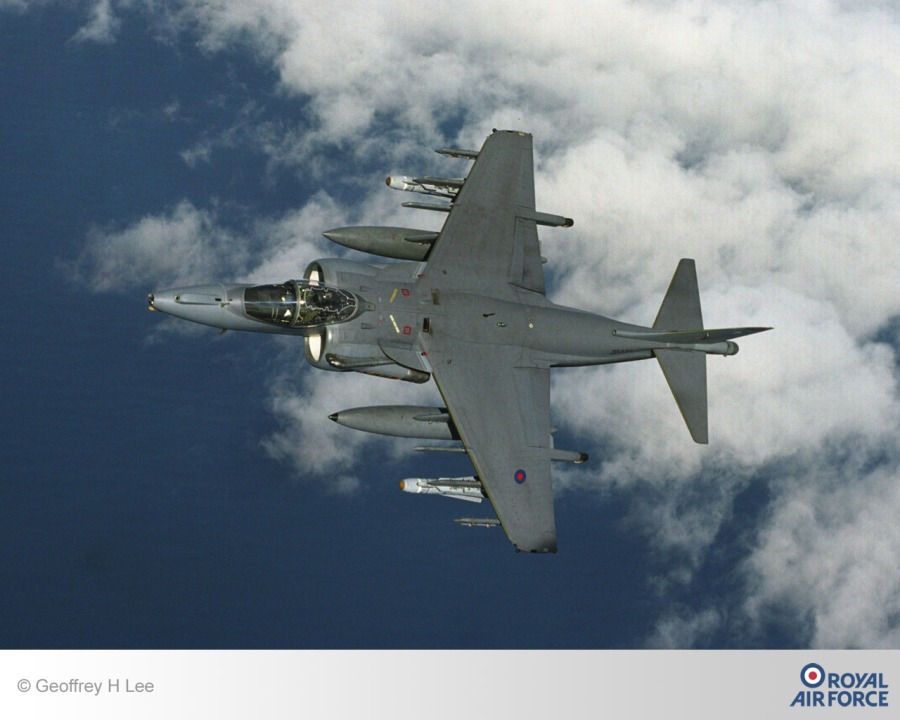

Due to budget constraints all British Aerospace Harrier II aircraft were controversially retired from service in 2010/2011 leaving the Royal Navy without combat aircraft for the first time in many decades (originally it was intended they would stay in service until 2018 when the F-35B Lightning II was due to enter service). Most of the airframes were sold to the USMC for spares (77 airframes), 3 others ended up in museums (RAF Museum, Fleet Air Arm Museum, and the Imperial War Museum) and 2 were retained for ground training purposes at the Royal Navy Air Engineering & Survival School (Gosport) and at RAF Wittering (Lincolnshire). The airframes purchased by the United States for £110 million are now stored at Davis Monthan Air Force Base 309th Aerospace Maintenance and Regeneration Group (309 AMARG aka “The Boneyard”) in Arizona and will provide spare parts for the USMC Harrier II fleet until at least 2025.

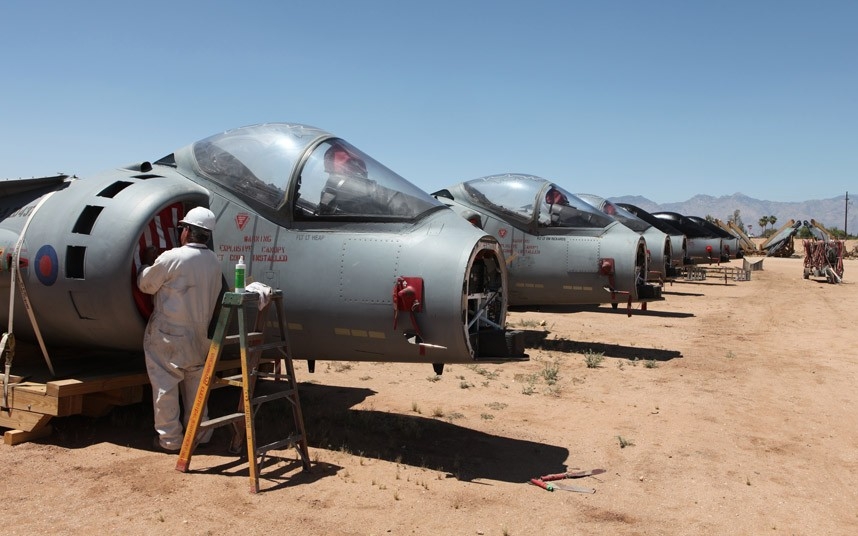
The initial GR.5 variant was similar to the USMC day attack Harrier II and was fitted with the Rolls Royce Pegasus 11-21 Mk.105 engine. It was soon determined that upgrades were required to make the Harrier II an all weather day/night attack aircraft. 34 new build GR.7 aircraft were introduced in 1990 to 1991 with night attack equipment and improved avionics (this was completed in conjunction with the USMC AV-8B night attack upgrade). All GR.5 aircraft were upgraded to the GR.7 standard. A number of GR.7 aircraft were fitted with the upgraded Pegasus 11-61 Mk.107 engine which significantly increased performance providing around an extra 3,000 pounds of thrust! This type was re-designated GR.7A.
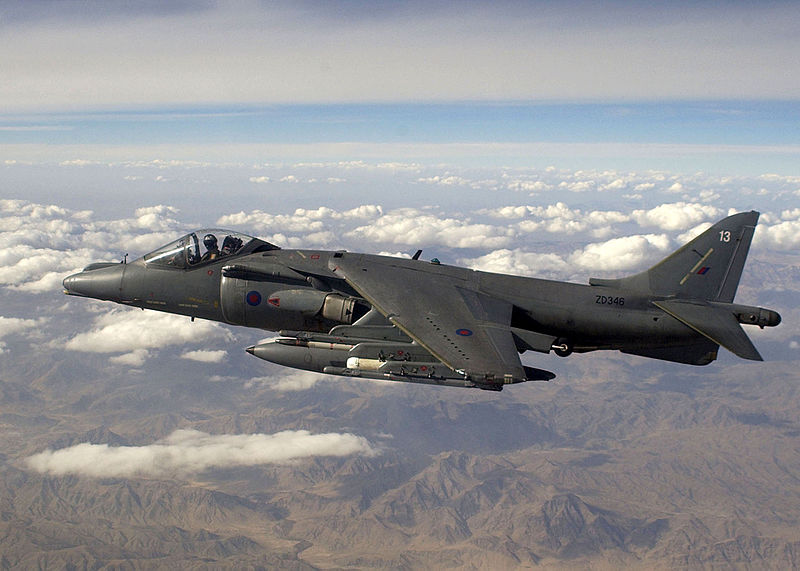

In addition the T.10 two-seat trainer variant was operated by the RAF. This was similar to the USMC TAV-8B but retained full combat capability. Some were upgraded with the Mk.107 engine to T.10A standard.

Around 70 GR.7/GR.7A aircraft were upgraded to the final GR.9/GR.9A variant which were fitted with improved avionics, new communications systems, advanced guided weaponry such as the AGM-65 Maverick air to ground missile and airframe upgrades. The first entered service in October 2006. The T.10/T.10A two-seat training aircraft were also upgraded to the T.12/T.12A standard which was equivalent to the GR.9/GR.9A.

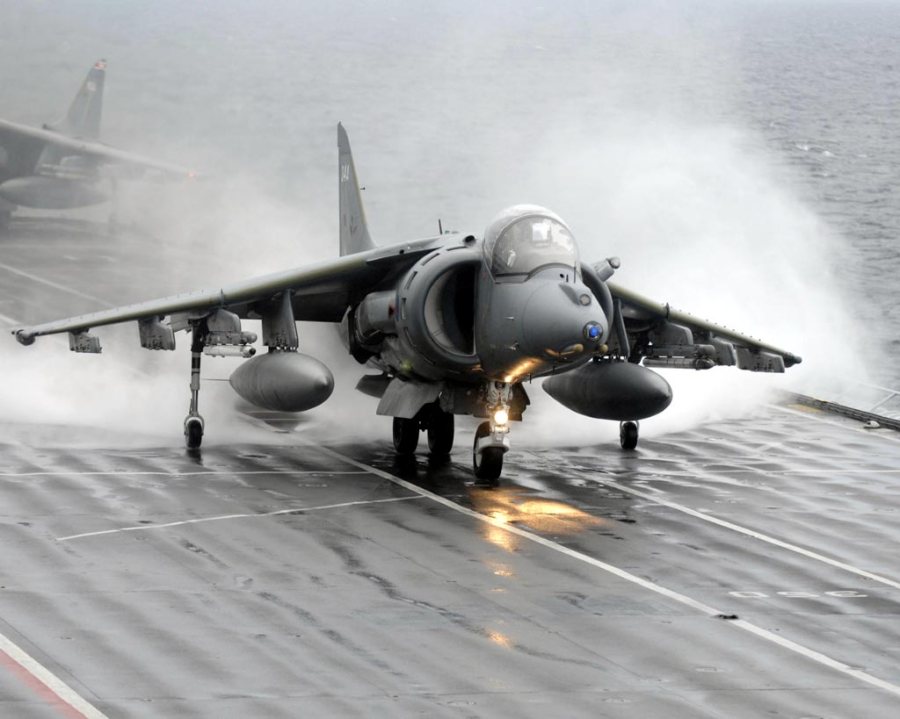



Harrier II Combat Service
McDonnell Douglas and British Aerospace variants of the Harrier II have seen extensive combat service including the Gulf Wars (First Gulf War 1990 to 1991, no fly zone until 2003 and the Second Gulf War in 2003 – USMC and RAF), Bosnia and Herzegovina no fly zone (1993 – RAF, Italy and Spain), Yugoslavia/Kosovo (1999 – USMC, RAF and Spain), Afghanistan (2001 to 2014 – USMC, RAF and Italy), Libya (NATO Operation Unified Protector no fly zone in 2011 – USMC and Italy). Since 2014 they are once again in combat over Iraq in the fight against ISIS militants (USMC). The type has provided highly effective attack, close support and reconnaissance sorties throughout these conflicts. The ability to get down low and fast in the valleys of Afghanistan to conduct close support missions would have been greatly appreciated by the coalition troops on the ground!

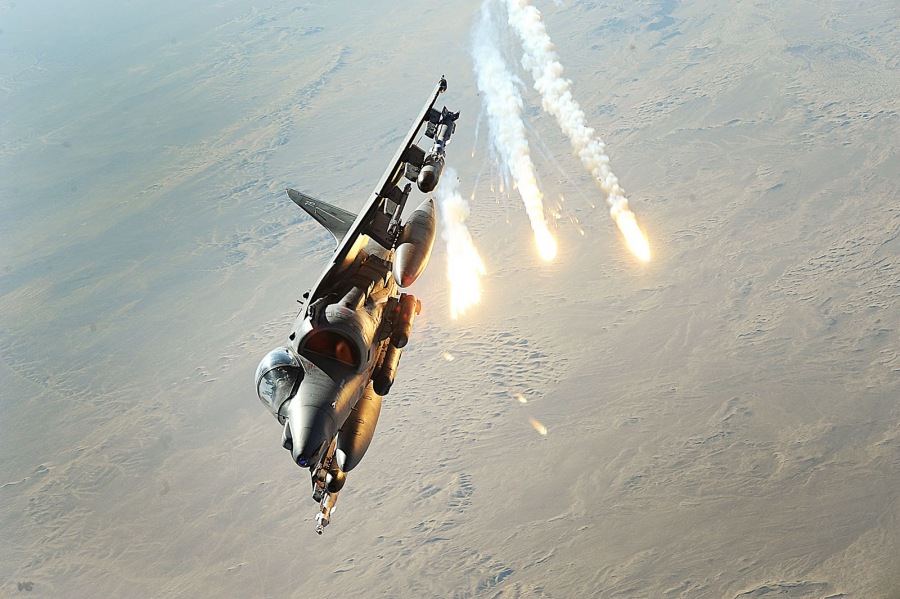
SOVIET SUPERSONIC V/STOL
Another second generation V/STOL combat aircraft was the Yakovlev Yak-141 Freestyle (also designated Yak-41) multi-role fighter which was developed by the Soviets but despite promising performance and maneuverability and being significantly more capable than the earlier Yak-38 Forger it never became operational due to a lack of funding following the 1991 collapse of the Soviet Union. The Yak-141 was a supersonic fighter (Mach 1.4+) designed for carrier operations and specifically fleet air defence. Only 2 flying Yak-141 prototypes were built plus 2 static test airframes (development work commenced in 1975 but the first of the prototypes was not built until 1987). They were fitted with a rear Soyuz R-79V-300 turbofan engine with vectorable nozzle and afterburner for lift/horizontal flight along with 2 smaller downward RKBM RD-41 engines behind the cockpit for vertical lift during takeoff and for landing/hovering (similar to the earlier Yak-38). The main engine nozzle could turn 95 degrees downwards for take-off and landing.

The Yak-141 prototypes were used for flight testing between 1987 and 1991 when the program was cancelled. In 1990 full tests of the aircraft were conducted including transition from VTOL to supersonic level flight and in 1991 the prototypes successfully completed the first vertical landings on the Russian Navy Kiev class aircraft carrier Baku (later renamed Admiral Gorshkov). During the 8 carrier flights conducted between September and October 1991 the second prototype experienced a very heavy landing on October 5th, 1991, ruptured the fuel tank and caught fire. The pilot safely ejected and the aircraft was later repaired but only for static display. Despite favourable performance (other than the fire!), that same month the Soviet Navy ceased funding to the program.

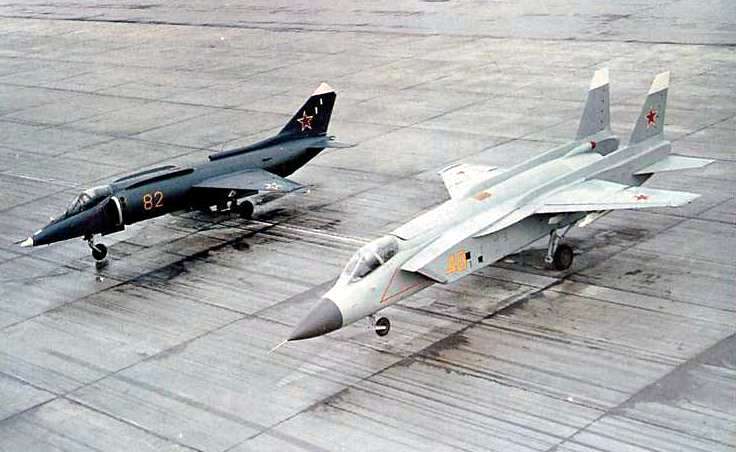
In 1991 Yakovlev entered a limited partnership with Lockheed-Martin to fund further development of the Yak-141. To promote sales an aircraft was returned to flight and conducted spirited flying displays at the 1992 Farnborough Airshow in the UK. By 1993 the aircraft were displayed in non flying condition at a Moscow airshow but by 1994 it seems that the fate of the Yak-141 was sealed. No sales were secured and no further aircraft were built. The limited partnership and Soviet technology were a stepping stone for future aircraft development and it is impossible to not notice the similarity in the engine design and that of what would later feature on the Lockheed-Martin F-35B Joint Strike Fighter.



My next post will discuss the latest generation Short Take Off Vertical Landing (STOVL) Lockheed Martin F-35B Lightning II. The highly controversial Joint Strike Fighter.
References:
NASA Flight Research at Ames, 1940-1997

Thank you for the very good pictures and the acurate text.
LikeLiked by 1 person
Thanks! I find V/STOL a fascinating subject
LikeLike
Also…
LikeLiked by 1 person
The only way to fly!
LikeLiked by 1 person
A fact filled post. It must have taken a lot of research and time, very interesting stuff here.
LikeLiked by 1 person
Thanks. It did but its something I am interested in so I enjoy learning more and passing it on to share. Ironically I hated school but its different when you are researching for your own entertainment!
LikeLiked by 1 person
It is indeed. I really enjoy reading some of this stuff.
LikeLiked by 1 person
An excellent series Deano. If I were to give a short course on V/STOL I would use this series you’ve put together. Thanks very much for this work of yours,
LikeLiked by 1 person
Thanks Joe! One more to go
LikeLike
Then I will cover my visits to the Nixon and Reagan libraries
LikeLike
[…] early experimental, prototype and operational V/STOL combat jet aircraft such as the Harrier and Harrier II that were developed in the late 1950’s through to the 1980’s. By the 1980’s […]
LikeLike
Hi Deano
I’m Ivan from Bulgaria. I admire your blog Aces flying high. Brief History of V / STOL Combat Aircraft. I am writing a book about British jet fighters. Can I use some information from your blog for the airplanes Kestrel and Harrier? Also, some photographs which are not copyrighted. I would be very grateful very grateful and I will note your permission in the book.
LikeLike
Hi Ivan, thanks, that sounds fine. What images did you want to use?
LikeLike